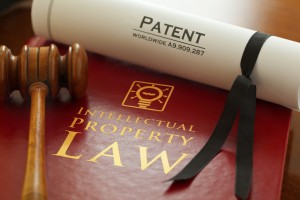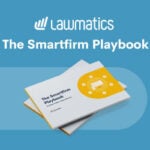The Patent Plaintiff's Edge ... And Burden
Let's revisit some of the conditions that led to the viability of IP Edge’s volume-based nuisance settlement approach to patent litigation.
 Every so often in the patent litigation world, a court decision is issued that immediately grabs everyone’s attention as tightly as the Iron Sheik’s camel clutch would grip a helpless adversary’s chin. Last week saw one such showstopper, with the latest development in the long-running saga involving the singlemost prolific patent-filing entity, IP Edge, which has been pitted against the chief judge of one of the nation’s leading courts handling patent cases, Delaware’s Hon. Colm F. Connolly. As usual, timely and informative coverage of Connolly’s latest opinion could be found on the IP/DE Blog, which had plenty to say about the “monster 102-page opinion” asking for additional review of the conduct of IP Edge and its lawyers by the “Texas Supreme Court’s Unauthorized Practice of Law Committee, the PTO, and the Department of Justice to determine whether counsel violated various rules — or federal laws.” I have previously commended IP/DE’s coverage of these matters, primarily in an interview I did with Andrew Russell just about a year ago. I continue to do so, along with what I imagine will be a flood of additional informed commentary on this blockbuster opinion. While the focus of the decision is on the actions of IP Edge and its counsel, what happens next could have ramifications for a broader swath of the patent litigation market, from patent owners to litigation funders to the lawyers they work with.
Every so often in the patent litigation world, a court decision is issued that immediately grabs everyone’s attention as tightly as the Iron Sheik’s camel clutch would grip a helpless adversary’s chin. Last week saw one such showstopper, with the latest development in the long-running saga involving the singlemost prolific patent-filing entity, IP Edge, which has been pitted against the chief judge of one of the nation’s leading courts handling patent cases, Delaware’s Hon. Colm F. Connolly. As usual, timely and informative coverage of Connolly’s latest opinion could be found on the IP/DE Blog, which had plenty to say about the “monster 102-page opinion” asking for additional review of the conduct of IP Edge and its lawyers by the “Texas Supreme Court’s Unauthorized Practice of Law Committee, the PTO, and the Department of Justice to determine whether counsel violated various rules — or federal laws.” I have previously commended IP/DE’s coverage of these matters, primarily in an interview I did with Andrew Russell just about a year ago. I continue to do so, along with what I imagine will be a flood of additional informed commentary on this blockbuster opinion. While the focus of the decision is on the actions of IP Edge and its counsel, what happens next could have ramifications for a broader swath of the patent litigation market, from patent owners to litigation funders to the lawyers they work with.
For purposes of this column, however, I’d like to take a step back and revisit some of the conditions that led to the viability of IP Edge’s volume-based nuisance settlement approach to patent litigation. To start, remember that in a typical patent case there are three cardinal issues for adjudication: infringement, validity, and damages. For both infringement and damages, the burden of proof lies on the patent owner, based on a preponderance of the evidence standard. Everyone involved in patent litigation knows this, but not everyone has always attached equal importance — particularly at the early stages of a case — to the issues of infringement and damages. In the minority example, one could argue that litigation funders conducting diligence on prospective investments prioritize damages over infringement, in that even an airtight case on infringement may not be deemed fundable if the addressable damages do not justify the investment. Again, this is the minority example.
In almost every other context, however, making sure that a cognizable damages claim is in place takes a back seat to infringement in both the prefiling and early stages of a case. For some good reasons, including the fact that many patent litigators are either not schooled in, or not excited by, putting together a damages case — as they would much rather focus on the more scientific, intellectually satisfying (to them), technical issues in the case. Even more importantly, everyone practicing patent litigation knows that without an infringement claim that passes Rule 11 muster a case can’t — or at least shouldn’t — be brought in the first place. Put another way, patent assertion entities of any stripe that make a habit of filing cases with frivolous infringement reads are probably not good bets to survive very long. In fact, we see that even at IP Edge, a lot of attention, prefiling, was in making sure that claim charts were prepared to support at least colorable infringement claims. Not that anyone would think that IP Edge’s cases were the strongest, but at least the effort was made and respect given to the idea that infringement claims must have some support when filed.

InterAction+ Brings Power Of CRM Software To Law Firms Of All Sizes
At the same time, it is clear that there seemed to have been no room or even thought given to damages issues in IP Edge’s approach. As the settlement communications disclosed in Connolly’s opinion show, the entire exercise was divorced from any discussion of the actual damages that the plaintiffs could have or were reasonably seeking. Instead, arriving at a license amount appears to have been little more than an exercise in throwing numbers back and forth, ostensibly tied to cost of litigation metrics, as opposed to any calculation of a reasonable royalty at a hypothetical negotiation of the parties assuming infringement and validity. Yes, once IP Edge signed up a licensee or two for a given portfolio someone could argue that a royalty range based on prior licenses may or may not have existed. But there is also no doubt that had IP Edge been held to the same standard of showing entitlement to relief based on damages as it attempted to meet on infringement, things may have gone very differently for both itself and its litigation targets, especially when IP Edge was asserting a given group of patents for the first time.
What I think is worthy of further consideration in light of the IP Edge debacle is the question of whether there has been a collective lack of attention to the plaintiff’s burden of proof and Rule 11 obligations when it comes to damages in too wide a swath of patent cases. Just as patent holders should not be filing cases where they can’t articulate colorable arguments as to why infringement exists, so too should every plaintiff bringing an infringement claim be able to articulate a colorable argument as to what type of damages it is entitled to based on the evidence available to it prediscovery. When I represent defendants in a patent case, part of my job is to find out as soon as possible what the other side is looking for in terms of money — and why they think they are entitled to that amount. And when I am representing a plaintiff, I acknowledge that I must be prepared to answer that very same question. Likewise, I think getting answers around a plaintiff’s initial damages contentions can be an important part of crafting an appropriate discovery plan for a case, on top of the benefit such disclosure could be to the exploration of early settlement. That information would of course be helpful to both opposing counsel and the court, each of which has a need and desire to give the proper amount of attention and resources to a case based on that case’s value.
Ultimately, I know that it is unrealistic to expect that plaintiffs be prepared with a complete damages analysis and demand when they first file cases. Nor am I suggesting that defendants should not be asked to respond to a plaintiff’s initial damages contentions in some way. I recognize that crafting a damages theory for presentation to a jury is, of course, the domain of qualified experts, who will need to rely on full and complete fact discovery to prepare the damages report that their testimony will be based on. But just like we expect viable infringement contentions at the very beginning of a case — even as we know that final infringement contentions and testimony is also the domain of experts — so too can we make a collective push toward demanding the same level of attention to damages earlier in cases. As I said before, funders and sophisticated contingency trial firms already make that demand when performing diligence on cases. And we have seen with the IP Edge behavior criticized by Connolly what can happen to the patent ecosystem when many cases are filed where damages are treated as an afterthought at the time of case filing. It is time to acknowledge that the burden of plaintiffs when filing and litigating patent cases always demands attention to damages issues, irrespective of where in its lifecycle a case may be at the moment. That attention could perhaps help correct the imbalance that has crept into too much of our collective approach to patent litigation.
Please feel free to send comments or questions to me at gkroub@kskiplaw.com or via Twitter: @gkroub. Any topic suggestions or thoughts are most welcome.
Sponsored

LawPay Pro Offers Upgraded Time And Billing Essentials

How to Achieve Quicker, More Valuable Case Settlements with Minimal Effort: A Guide for Personal Injury Lawyers

How Generative AI Is Disrupting Law Firm Billing Practices

The Smartfirm Playbook - Thriving In Today’s Legal Landscape
Gaston Kroub lives in Brooklyn and is a founding partner of Kroub, Silbersher & Kolmykov PLLC, an intellectual property litigation boutique, and Markman Advisors LLC, a leading consultancy on patent issues for the investment community. Gaston’s practice focuses on intellectual property litigation and related counseling, with a strong focus on patent matters. You can reach him at gkroub@kskiplaw.com or follow him on Twitter: @gkroub.
Sponsored

InterAction+ Brings Power Of CRM Software To Law Firms Of All Sizes








